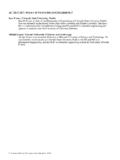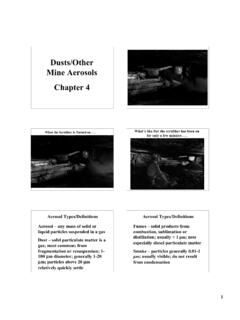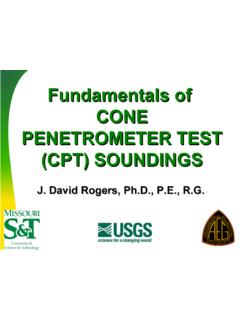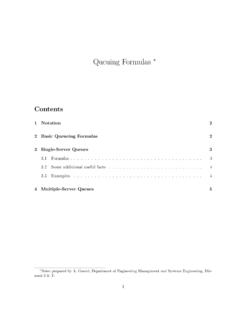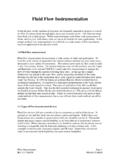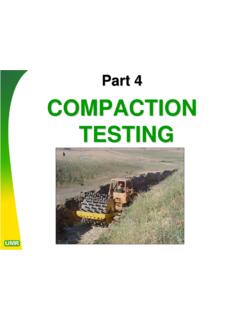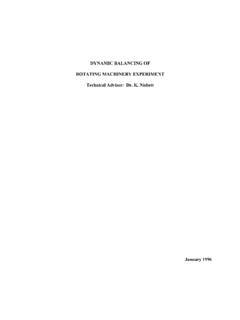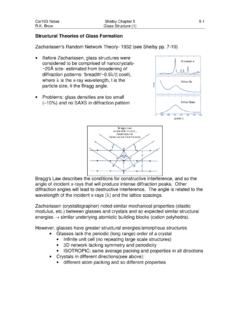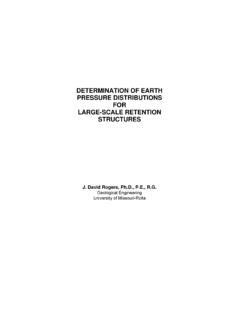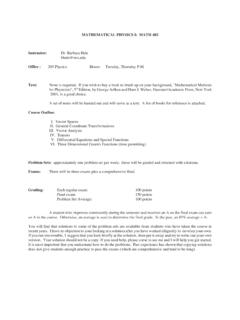Transcription of Chapter 5 ANGULAR MOMENTUM AND ROTATIONS
1 Chapter 5. ANGULAR MOMENTUM AND ROTATIONS . In classical mechanics the total ANGULAR MOMENTUM L ~ of an isolated system about any xed point is conserved. The existence of a conserved vector L ~ associated with such a system is itself a consequence of the fact that the associated Hamiltonian (or Lagrangian). is invariant under ROTATIONS , , if the coordinates and momenta of the entire system are rotated rigidly about some point, the energy of the system is unchanged and, more importantly, is the same function of the dynamical variables as it was before the rotation . Such a circumstance would not apply, , to a system lying in an externally imposed gravitational eld pointing in some speci c direction.
2 Thus, the invariance of an isolated system under ROTATIONS ultimately arises from the fact that, in the absence of external elds of this sort, space is isotropic; it behaves the same way in all directions. Not surprisingly, therefore, in quantum mechanics the individual Cartesian com- ponents Li of the total ANGULAR MOMENTUM operator L ~ of an isolated system are also constants of the motion. The di erent components of L ~ are not, however, compatible quantum observables. Indeed, as we will see the operators representing the components of ANGULAR MOMENTUM along di erent directions do not generally commute with one an- other.
3 Thus, the vector operator L ~ is not, strictly speaking, an observable, since it does not have a complete basis of eigenstates (which would have to be simultaneous eigenstates of all of its non-commuting components). This lack of commutivity often seems, at rst encounter, as somewhat of a nuisance but, in fact, it intimately re ects the underlying structure of the three dimensional space in which we are immersed, and has its source in the fact that ROTATIONS in three dimensions about di erent axes do not commute with one another. Indeed, it is this lack of commutivity that imparts to ANGULAR MOMENTUM observables their rich characteristic structure and makes them quite useful, , in classi- fying the bound states of atomic, molecular, and nuclear systems containing one or more particles, and in decomposing the scattering states of such systems into components as- sociated with di erent ANGULAR momenta.
4 Just as importantly, the existence of internal spin degrees of freedom, , intrinsic ANGULAR momenta associated with the internal structure of fundamental particles, provides additional motivation for the study of angu- lar MOMENTUM and to the general properties exhibited by dynamical quantum systems under ROTATIONS . Orbital ANGULAR MOMENTUM of One or More Particles The classical orbital ANGULAR MOMENTUM of a single particle about a given origin is given by the cross product ~` = ~r ~. p ( ). of its position and MOMENTUM vectors. The total ANGULAR MOMENTUM of a system of such structureless point particles is then the vector sum X X.
5 ~ =. L ~` = ~r p~ ( ).. 162 ANGULAR MOMENTUM and ROTATIONS of the individual ANGULAR momenta of the particles making up the collection. in quantum mechanics , of course, dynamical variables are replaced by Hermitian operators, and so we are led to consider the vector operator ~` = R. ~ P~ ( ). or its dimensionless counterpart ~. ~l = R ~ = `;. ~ K; ( ). ~. either of which we will refer to as an ANGULAR MOMENTUM ( , we will, for the rest of this Chapter , e ectively be working in a set of units for which ~ = 1). Now, a general vector operator B~ can always be de ned in terms of its operator components fBx ; By ; Bz g along any three orthogonal axes.
6 The component of B ~ along any other direction, de ned, , by the unit vector u ~ ^ = Bx ux + By uy + Bz uz . So it is with the ^; is then the operator B u operator ~l; whose components are, by de nition, the operators lx = Y Kz ZKy ly = ZKx XKz lz = XKy Y Kx : ( ). The components of the cross product can also be written in a more compact form X. li = "ijk Xj Kk ( ). j;k in terms of the Levi-Civita symbol 8. < 1 if ijk is an even permutation of 123. "ijk = 1 if ijk is an odd permutation of 123 . ( ). : 0 otherwise Although the normal product of two Hermitian operators is itself Hermitian if and only if they commute, this familiar rule does not extend to the cross product of two vector operators.
7 Indeed, even though R~ and K ~ do not commute, their cross product ~l is readily shown to be Hermitian. From ( ), X X X. li+ = "ijk Kk+ Xj+ = "ijk Kk Xj = "ijk Xj Kk = li ; ( ). j;k j;k j;k where we have used the fact the components of R ~ and K~ are Hermitian and that, since "ijk = 0 if k = j; only commuting components of R ~ and K~ appear in each term of the cross product: It is also useful to de ne the scalar operator l2 = ~l ~l = lx2 + ly2 + lz2 ( ). which, being the sum of the squares of Hermitian operators, is itself both Hermitian and positive. So the components of ~l; like those of the vector operators R.
8 ~ and P~ ; are Hermitian. We will assume that they are also observables. Unlike the components of R ~ and P~ ;. ~. however, the components of l along di erent directions do not commute with each other. This is readily established; , [lx ; ly ] = [Y Kz ZKy ; ZKx Kz X]. = Y Kx [Kz ; Z] + Ky X [Z; Kz ]. = i (XKy Y Kx ) = ilz : Orbital ANGULAR MOMENTUM of One or More Particles 163. The other two commutators are obtained in a similar fashion, or by a cyclic permutation of x; y; and z; giving [lx ; ly ] = ilz [ly ; lz ] = ilx [lz ; lx ] = ily ; ( ). which can be written more compactly using the Levi-Civita symbol in either of two ways, X.
9 [li ; lj ] = i "ijk lk ; ( ). k or X. "ijk li lj = ilk ;. i;j the latter of which is, component-by-component, equivalent to the vector relation ~l ~l = i~l: ( ). These can also be used to derive the following generalization h i . ~l a ^; ~l ^b = i~l a^ ^b ( ). involving the components of ~l along arbitrary directions a ^ and ^b. It is also straightforward to compute the commutation relations between the com- ponents of ~l and l2 , , 2 X X X. lj ; l = lj ; li2 = li [lj ; li ] + [lj ; li ] li i i i X X. = i ("ijk li lk + "ijk lk li ) = i ("ijk li lk + "kji li lk ). i;k i;k X. = i "ijk (li lk li lk ) = 0 ( ).
10 I;k where in the second line we have switched summation indices in the second sum and then used the fact that "kji = "ijk : Thus each component of ~l commutes with l2 : We write h i X. ~l; l2 = 0 [li ; lj ] = i "ijk lk : ( ). k The same commutation relations are also easily shown to apply to the operator representing the total orbital ANGULAR MOMENTUM L ~ of a system of particles. For such a system, the state space of which is the direct product of the state spaces for each particle, the operators for one particle automatically commute with those of any other, so that X X X X X. [Li ; Lj ] = [li; ; lj; ] = i "ijk ; lk; = i "ijk lk.
